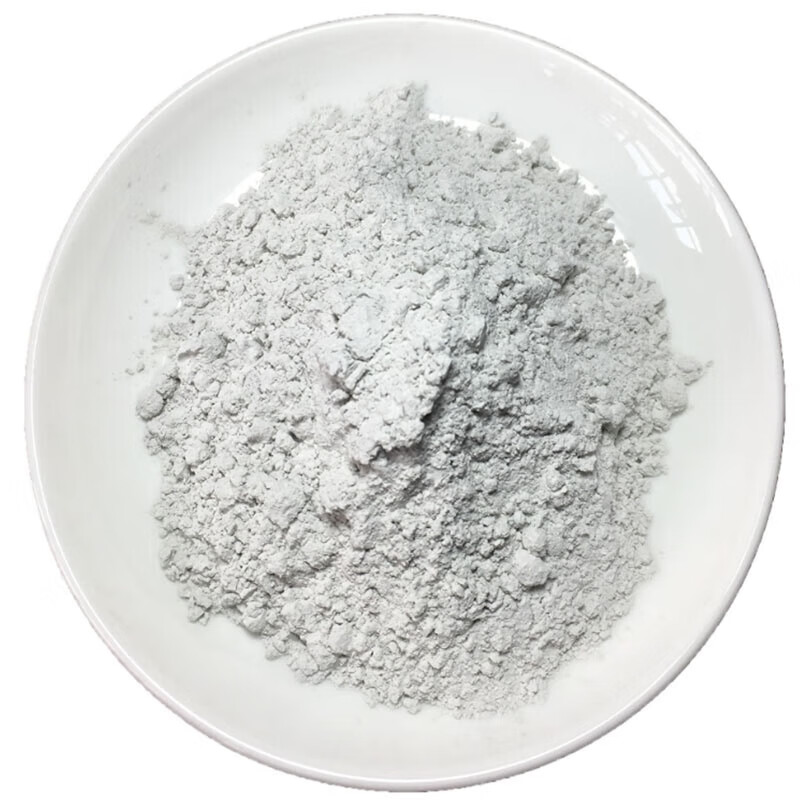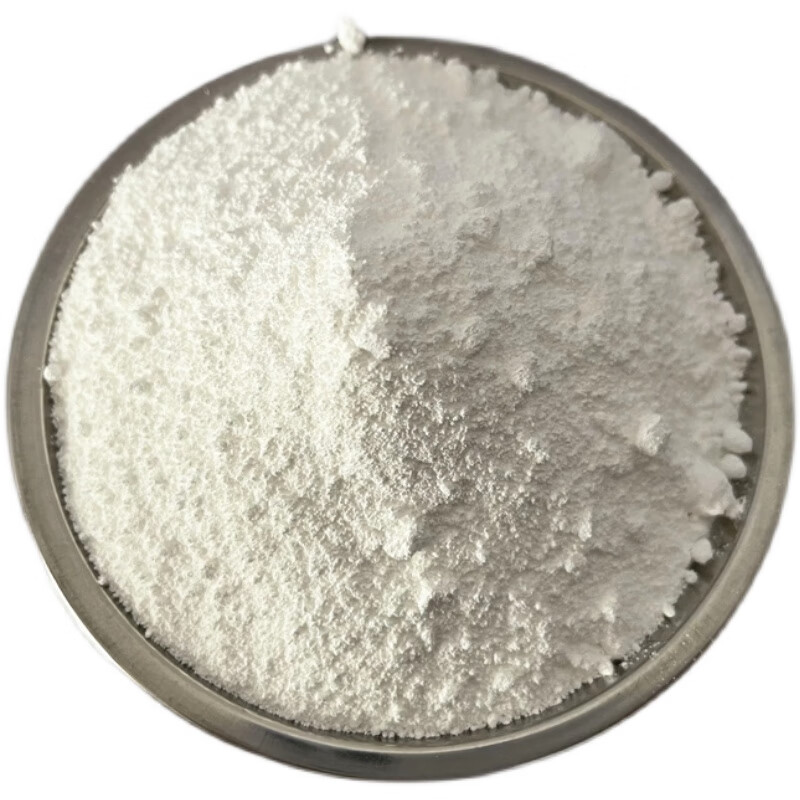Warum Aluminiumnitridpulver modifizieren?
Aluminiumnitrid (AlN), as an emerging advanced ceramic material, has gained the reputation of “thermal conductive star material” in the fields of electronics, optoelectronics, aerospace, etc. due to its excellent thermal conductivity (theoretical value up to 320 W/m · K), reliable electrical insulation, and low thermal expansion coefficient matched with silicon. However, many users often encounter problems such as difficult dispersion, easy hydrolysis, and poor bonding with the substrate when directly using raw aluminum nitride powder. The key behind this lies in the inherent defects in the surface properties of unmodified aluminum nitride powder.

Core question: Why does “primitive” aluminum nitride powder need to be modified?
The surface of “primitive” aluminum nitride powder has high polarity and is rich in aluminum hydroxyl groups, which leads to three core challenges:
- Highly hydrolyzed: Aluminum nitride powder is extremely sensitive to water molecules and reacts with water to produce aluminum hydroxide and ammonia gas. This not only changes the chemical composition of the powder, reduces the thermal conductivity of its final sintered body, but also generates bubbles during the processing, leading to the failure of product densification and defects.
- Poor dispersibility: High surface energy can cause strong agglomeration tendency between powder particles, making it difficult to uniformly disperse in organic solvents or polymer resins (such as epoxy resin and silicone). Aggregates will become a “stumbling block” for thermal conductivity, seriously restricting the improvement of thermal conductivity of composite materials.
- Poor compatibility with the matrix: There is a significant difference in physical and chemical properties between the polar powder surface and the non-polar organic polymer matrix, resulting in weak interfacial bonding. This not only affects thermal conductivity, but also becomes a weak link in mechanical performance, which can easily lead to cracking and detachment.
Without modification, the excellent potential of aluminum nitride will be greatly reduced, and it may even be unusable.

Solution: How can surface modification “turn stone into gold”?
Surface modification technology is the fundamental solution to the above-mentioned problems by coating or grafting a layer of modifier molecules on the surface of nitride aluminum powder particles through physical or chemical methods.
Modification objective:
Enhance hydrolysis resistance: isolate direct contact between powder and moisture.
Improve dispersibility: reduce surface energy, decrease interparticle forces, and achieve stable and uniform dispersion.
Enhance interface bonding: Build a “molecular bridge” between the powder and the matrix to strengthen interface adhesion.
Common modification methods:
Coupling agent modification: such as silane coupling agent, titanate coupling agent, etc., is one of the most mainstream and effective technologies.
Surface coating: Coating with inorganic oxides (such as SiO2) or organic polymers.
In situ modification: Surface modification is directly carried out during the powder preparation process.

Product advantages and applications: Value brought by modified aluminum nitride powder
The value of the modified aluminum nitride powder is perfectly reflected in the final product.
- Application in high thermal conductivity gel/thermal conductivity gasket
Problem solved: Solved the difficult problem of sedimentation, agglomeration, and rapid viscosity increase of powder in silicone oil/silicone rubber system.
Produktvorteile:
High filling and low viscosity: The modified powder has good dispersibility and can achieve a higher proportion of filling (>70%), while maintaining good fluidity and operability of the system, making it easy for dispensing and automated production.
Doubling thermal conductivity: Uniform dispersion eliminates the bottleneck of thermal resistance, and the thermal conductivity easily breaks through 5-15 W/m · K, far exceeding the alumina system.
Good stability: avoids performance degradation and device corrosion risks caused by hydrolysis. - Application in high thermal conductivity epoxy plastic sealant
Problem solved: Improved the wettability between the powder and epoxy resin, preventing the formation of voids at the interface.
Produktvorteile:
Excellent thermal conductivity and insulation: providing efficient heat dissipation paths and reliable insulation protection for power semiconductors (such as IGBT) and LED chips.
High strength and low stress: The strong interface bonding force enhances the mechanical strength of the package and reduces the internal stress caused by thermal expansion mismatch, improving device reliability. - Application in high-temperature structural ceramics
Problem solved: Improved sintering activity and reduced sintering temperature.
Produktvorteile:
High densification: Modified powders have good flowability, high filling density, and are easier to sinter ceramic substrates or structural components close to theoretical density, thereby obtaining high thermal conductivity close to theoretical values.
Stable performance: Excellent hydrolysis resistance ensures the stability of powder treatment before sintering, greatly improving the yield of finished products.

Kundenbeispiel (anonym)
Customer A: A well-known power module manufacturer encountered issues with unstable viscosity and micro bubbles inside after curing when using unmodified aluminum nitride to prepare epoxy sealant.
Our solution: We provide a specific model of silane coupling agent modified aluminum nitride powder for it.
Effect: The powder has excellent dispersibility in epoxy resin, with viscosity stability increased by more than 50%. After curing, the product is dense and defect free, with a thermal conductivity increase of about 25%. The customer’s product yield has been significantly improved.
Customer B: A high-end thermal conductive interface material company hopes to develop a thermal conductive gel with a thermal conductivity of more than 10W/m · K, but it faces the technical bottleneck of sharply increasing viscosity under high powder filling.
Our solution: We recommend our organic polymer coated aluminum nitride powder, which has extremely low surface energy and excellent steric hindrance effect.
Effect: The customer successfully achieved a high filling volume of 78%, with a thermal conductivity of 12.5 W/m · K, while still maintaining good flowability and construction performance, and successfully passed the end customer certification.

Brudeze Keramiken liefert und verkauft eine breite Palette von hochwertigem Quarzglas, einschließlich Aluminiumoxidkeramik, Zirkoniumdioxidkeramik, Siliziumnitridkeramik, Aluminiumnitridkeramik, Siliziumkarbidkeramik, Borkarbidkeramik, Biokeramik, maschinell bearbeitbare Keramik usw. Wir sind in der Lage, die Anforderungen an die Anpassung verschiedener Keramikprodukte zu erfüllen.
PREVIOUS:Wärmeleitfähigkeitswerte und andere Anwendungen von Aluminiumnitrid
KATEGORIEN
NEUESTE NACHRICHTEN
- Was ist Macor-verarbeitbares g...
- Die Materialeigenschaften und...
- Der Grund für den hohen Preis...
- Was sind die Vorbereitungen...
- Warum sollte man Aluminiumnitrid modifizieren...
- Werte der Wärmeleitfähigkeit...
- Was ist die thermische Ausdehnung...
- Widerstandsfähigkeit gegen Thermoschock von...
- Der durchschnittliche Koeffizient von ...
- Was ist hochaluminiumoxidhaltige Keramik?
